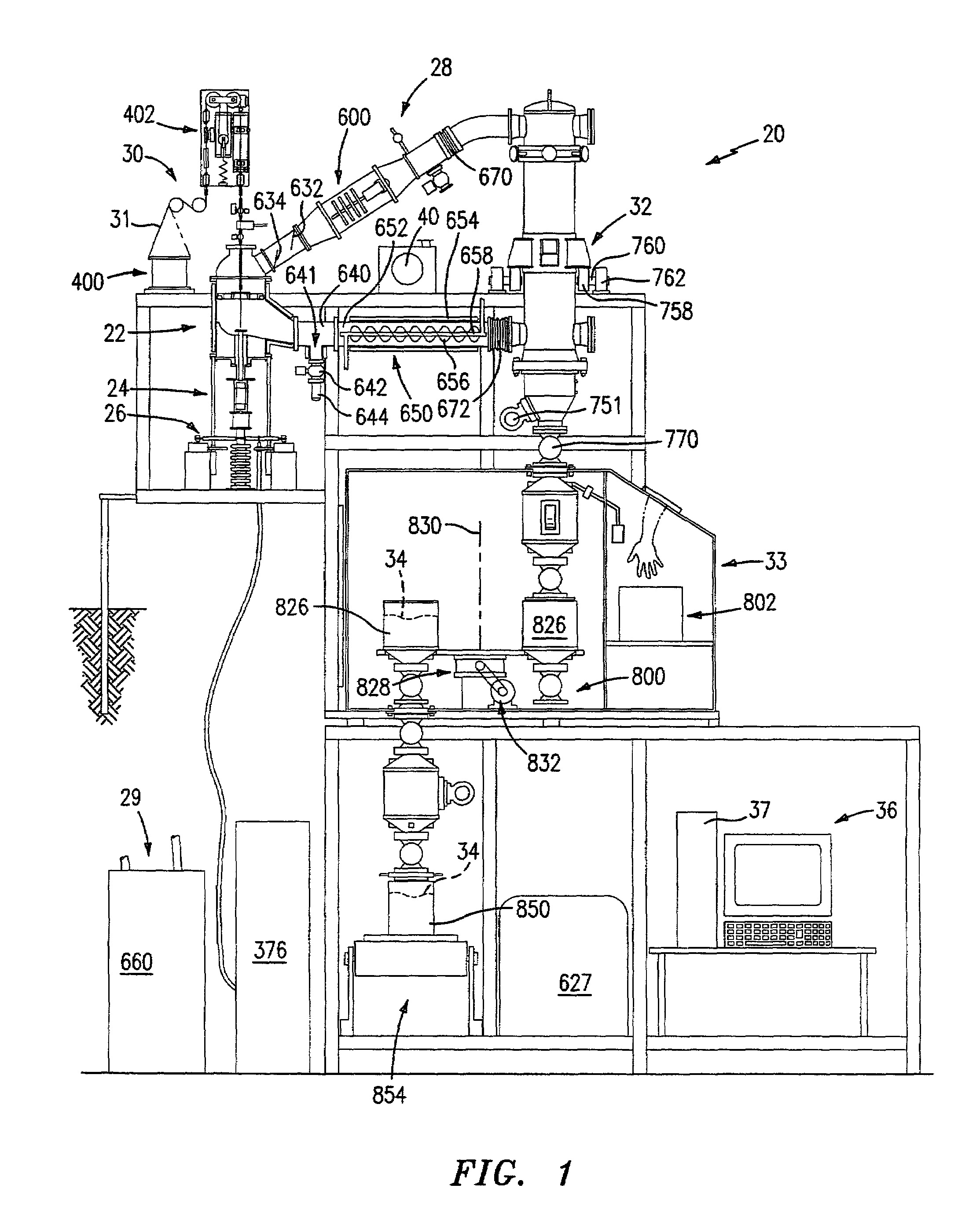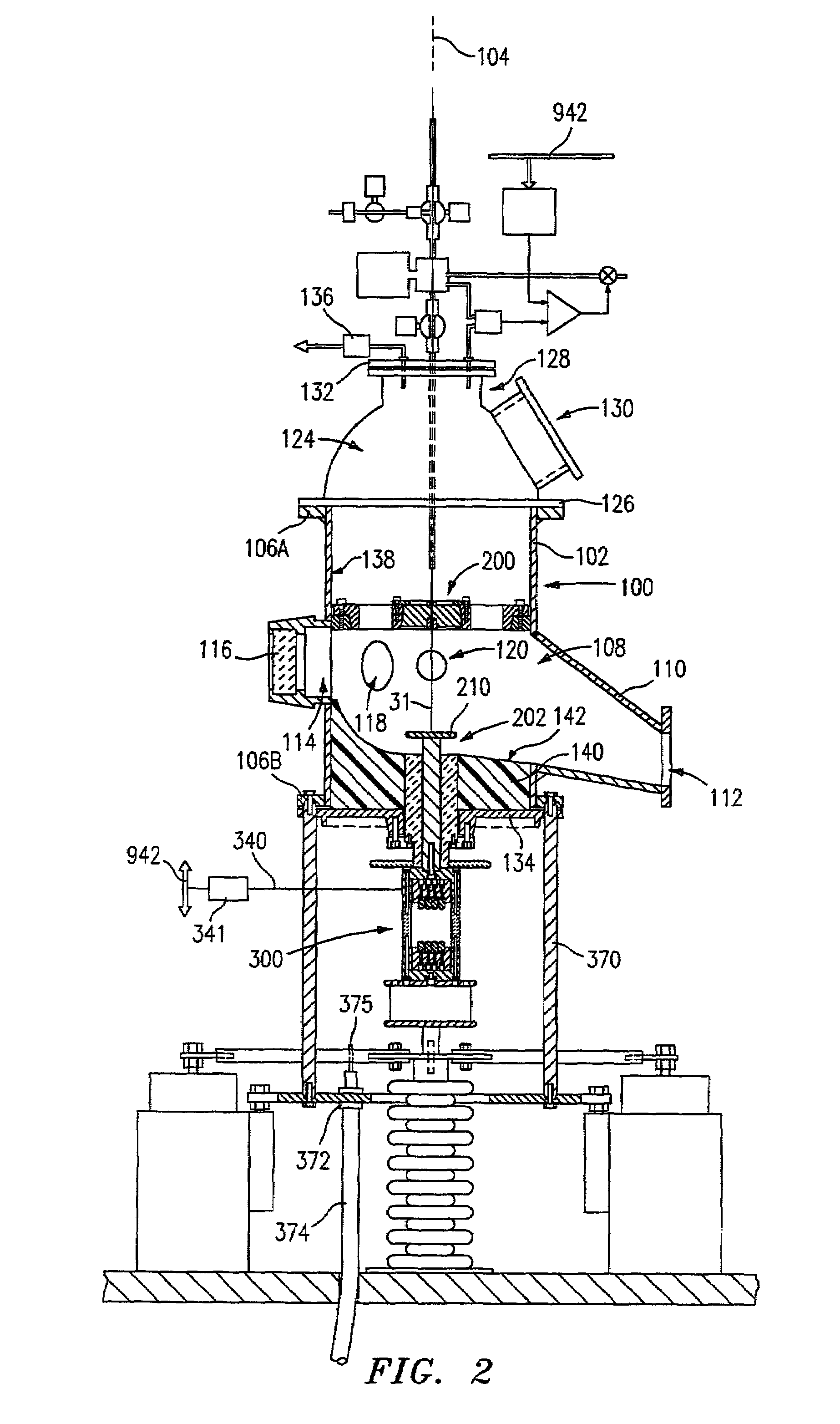Apparatus and methods for the production of powders
- Summary
- Abstract
- Description
- Claims
- Application Information
AI Technical Summary
Benefits of technology
Problems solved by technology
Method used
Image
Examples
Embodiment Construction
[0050]The invention provides an enhanced method and apparatus for the production of ultra-fine metal powders, or equivalently of metal oxides, metal nitrides, metal carbides and other compounds that might result from reaction of a dense metal plasma with a surrounding (bath) gas. A high voltage, high-current, pulsed power source is provided effective to deliver a large amount of electrical energy to a metal wire. Preferably, the energy delivered will significantly exceed that necessary to evaporate the metal (e.g., by a factor of about 1.1 to about 3 in preferred embodiments), a condition referred to as “superheating”. Energy is delivered over a period of time (e.g., a few microseconds in a preferred embodiment) short enough to ensure that the wire disintegrates explosively rather than simply evaporating.
[0051]By way of example, using 26AWG (0.404 mm diameter) aluminum wire feedstock (e.g., alloy 1188 (min. 99.88% pure) tempered to H-18 (dead soft)), exploded in 10 inch (25 cm) leng...
PUM
| Property | Measurement | Unit |
|---|---|---|
| Length | aaaaa | aaaaa |
| Fraction | aaaaa | aaaaa |
| Fraction | aaaaa | aaaaa |
Abstract
Description
Claims
Application Information
 Login to View More
Login to View More - R&D Engineer
- R&D Manager
- IP Professional
- Industry Leading Data Capabilities
- Powerful AI technology
- Patent DNA Extraction
Browse by: Latest US Patents, China's latest patents, Technical Efficacy Thesaurus, Application Domain, Technology Topic, Popular Technical Reports.
© 2024 PatSnap. All rights reserved.Legal|Privacy policy|Modern Slavery Act Transparency Statement|Sitemap|About US| Contact US: help@patsnap.com










